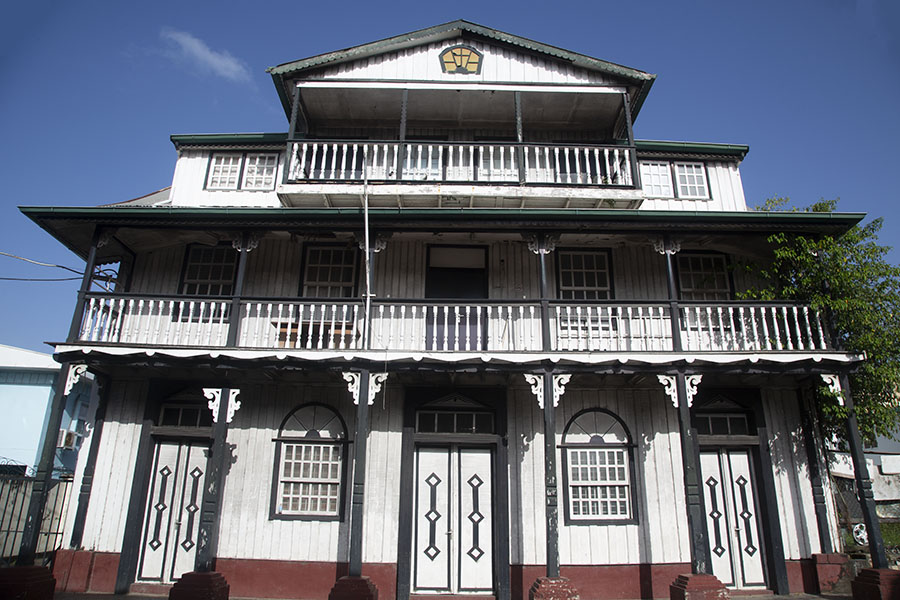So, you’re curious about the remarkable architecture of Paramaribo, huh? Well, get ready to be amazed by the stunning structures that make up this unique city. As you stroll through the streets of Paramaribo, you’ll be captivated by the vibrant colors, intricate details, and rich history that can be seen in its architecture. From the wooden colonial houses with their beautiful verandas to the majestic Dutch-inspired buildings, there’s something truly special about the architectural gems that adorn this city. Trust me, you won’t be able to resist taking out your camera and capturing the beauty that surrounds you!
But wait, there’s more! In this article, you’ll learn not only about the architectural wonders of Paramaribo, but also about the intriguing history behind them. Discover the influences that have shaped the city’s unique architectural style and get a glimpse into the lives of those who once inhabited these marvelous buildings. Whether you’re an architecture enthusiast or just someone who appreciates the beauty of a well-designed structure, this photo journal is sure to leave you inspired and longing to visit Paramaribo yourself. So, join me on this visual journey and prepare to be awestruck by the remarkable architecture of Paramaribo!
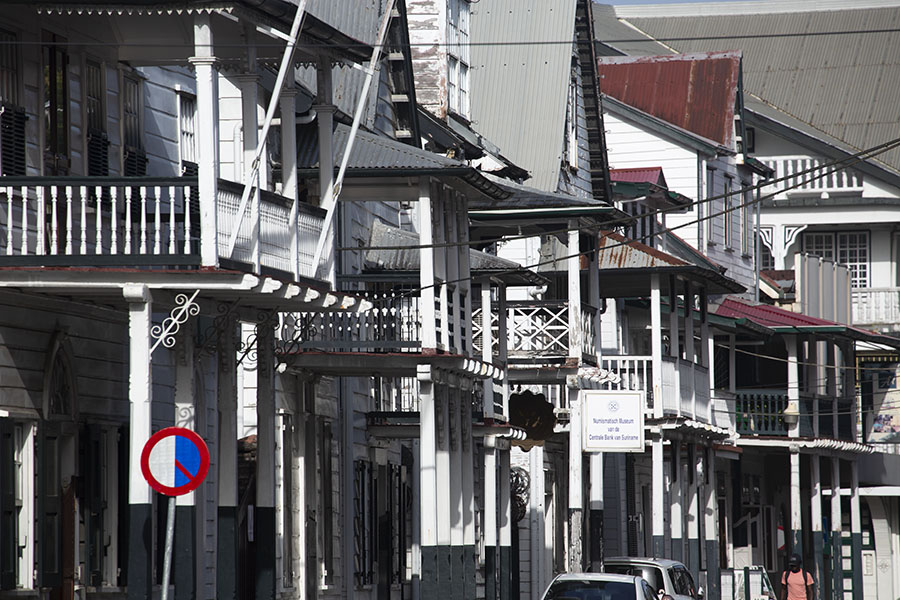
Tourism in Paramaribo
Welcome to Paramaribo, the capital city of Suriname. With its rich history and remarkable architecture, Paramaribo is a true treasure trove for tourists and architecture enthusiasts alike. In this photo journal, we will explore the unique features of Paramaribo’s architecture, discover its historical significance, and delve into the cultural significance of its buildings. Join us on this visual journey as we capture the essence of Paramaribo’s architectural splendor through the lens of our camera.
Attractions in Paramaribo
Paramaribo boasts an array of attractions that showcase its architectural beauty. One of the must-see landmarks is the Saint Peter and Paul Cathedral, a stunning example of Dutch colonial architecture. Its towering presence and intricate detailing make it a true architectural marvel. The Presidential Palace, another prominent landmark, showcases distinct neoclassical influences. Its iconic white façade and grand entrance make it a favorite spot for photographers.
Historical significance of Paramaribo
Paramaribo’s architecture is deeply rooted in its historical significance. The city was originally settled by the Dutch in the 17th century and quickly became a center of trade and commerce. Its strategic location on the Suriname River played a vital role in its development. Over the centuries, Paramaribo faced numerous challenges, including wars and fires, yet managed to preserve its architectural heritage. Today, the city is recognized as a UNESCO World Heritage site, a testament to its historical and cultural value.
Popular tourist destinations in Paramaribo
When visiting Paramaribo, there are several popular tourist destinations that are a must-visit. Fort Zeelandia, a historic fort located on the Suriname River, offers a unique insight into the city’s colonial past. Its sturdy stone walls and commanding presence transport visitors back in time. Another must-see is the Central Market, a vibrant hub of activity where you can immerse yourself in the local culture and indulge in delicious Surinamese cuisine. The market’s wooden structure and bustling atmosphere provide endless photographic opportunities.
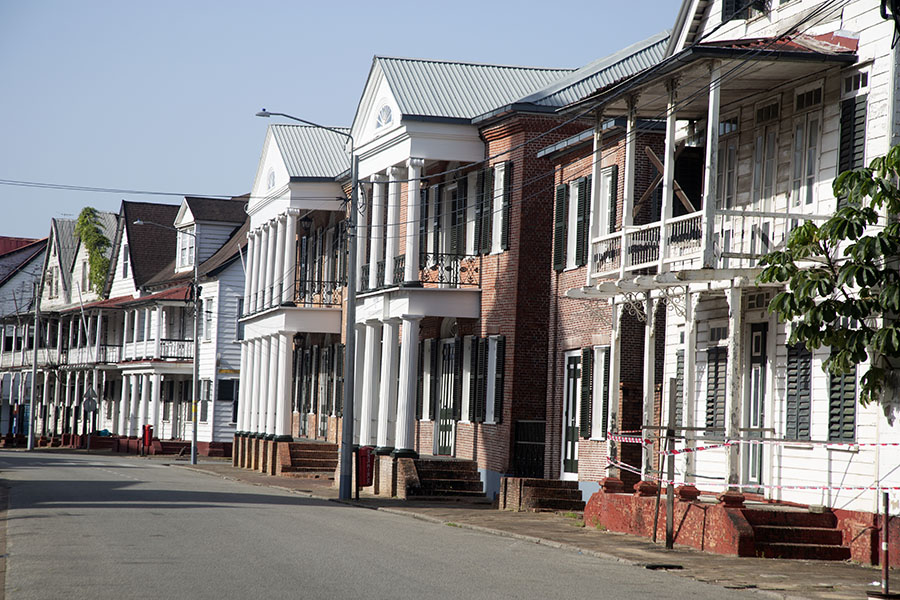
Unique features of Paramaribo architecture
Paramaribo’s architecture is characterized by its unique blend of Dutch and Caribbean influences. The city’s historic wooden buildings, known as “stadsboerderijen,” are a standout feature. These traditional Dutch townhouses are adorned with intricate wooden trim and can be found throughout the city. Their bright colors and ornate details add charm to Paramaribo’s streets. Another unique feature is the use of “Paramaribo green,” a distinctive shade of green paint that is prevalent on many buildings. This vibrant color adds to the city’s overall aesthetic appeal.
Exploring Paramaribo’s Architecture
Let’s take a closer look at Paramaribo’s architectural landscape. The city’s architecture is a fascinating blend of Dutch colonial, Caribbean, and indigenous influences. The colonial influence is evident in the use of sturdy materials such as stone and brick, as well as in the neoclassical and baroque elements that adorn many buildings. The city’s Caribbean heritage is reflected in the use of vibrant colors and the incorporation of natural elements in the designs. The indigenous influence can be seen in the use of traditional Surinamese building techniques, such as the use of wood and palm leaves.
Influence of Dutch colonialism on Paramaribo’s architecture
Dutch colonialism played a significant role in shaping Paramaribo’s architecture. The Dutch settlers brought with them their architectural styles and building techniques, which became deeply ingrained in the city’s fabric. The influence of Dutch colonialism can be seen in the gabled roofs, ornate facades, and symmetrical designs that are characteristic of many buildings in Paramaribo. These architectural elements are a testament to the city’s colonial past and serve as a marker of its historical significance.
Distinct architectural styles in Paramaribo
Paramaribo’s architecture is characterized by a diverse range of styles, each with its own unique features. One of the most prominent styles is Dutch colonial architecture, which is characterized by its brick or stone construction, gabled roofs, and detailed facades. The neoclassical style, popular during the 18th and 19th centuries, is also prevalent in Paramaribo. Buildings in this style feature symmetrical designs, grand entrances, and columns. The Creole style, influenced by African, Indigenous, and European cultures, is another distinctive architectural style in Paramaribo. It is characterized by its use of wood, bright colors, and ornate detailing.
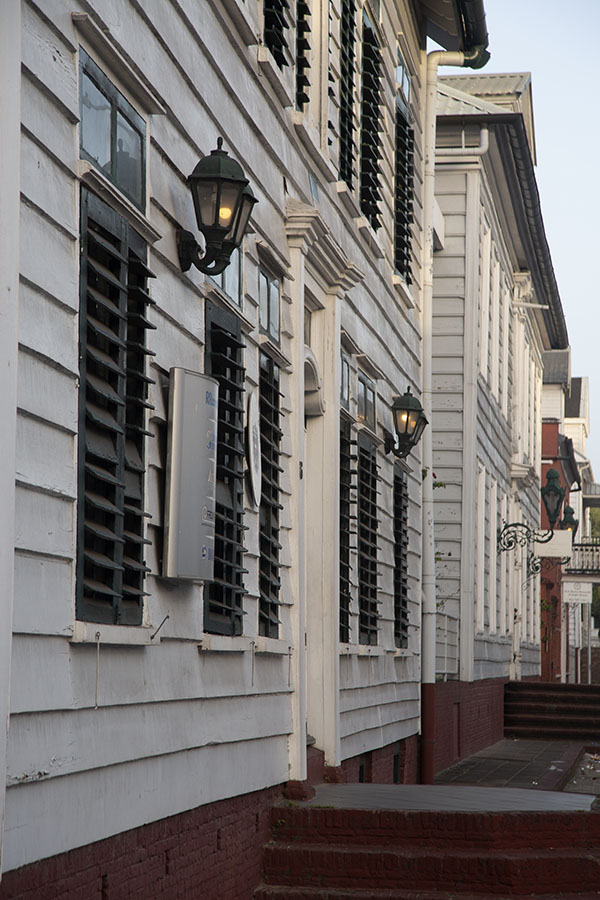
Architectural highlights of Paramaribo
Paramaribo is home to several architectural highlights that are worth exploring. One such highlight is the Waterkant, a picturesque street that runs along the Suriname River. Lined with beautiful colonial buildings, it offers stunning views of the river and is a popular spot for locals and tourists alike. Another highlight is the Palmentuin, a tranquil garden filled with palm trees and picturesque pathways. It provides a peaceful retreat from the bustling city streets and is a favorite spot for picnics and leisurely strolls.
Capturing the Remarkable Architecture Through Photography
Photography plays a crucial role in documenting and preserving the architectural beauty of Paramaribo. Through the lens of a camera, we can capture the intricate details, vibrant colors, and unique features of the city’s buildings. To truly capture the essence of Paramaribo’s architecture, it is important to pay attention to composition, lighting, and perspective. Experimenting with different angles and focal points can help in capturing the unique character of each building. Whether you are a professional photographer or an amateur enthusiast, Paramaribo’s architecture offers endless possibilities for creative expression.
Techniques for capturing the essence of Paramaribo’s architecture
To capture the essence of Paramaribo’s architecture, it is essential to explore different techniques and perspectives. One technique is to play with light and shadow to highlight the architectural details. The warm tropical sunlight can create dramatic effects and enhance the textures of the buildings. Another technique is to focus on the intricate details and patterns that adorn the facades of the buildings. These details add depth and character to the photographs. Additionally, experimenting with different lenses, such as wide-angle or telephoto lenses, can provide a fresh perspective and help in capturing the grandeur of the buildings.
Famous photographers who have captured Paramaribo’s architecture
Over the years, several renowned photographers have captured the architectural beauty of Paramaribo. One such photographer is Michael Rastapkevicius, whose black and white photographs showcase the city’s architectural diversity. His images beautifully capture the interplay of light and shadow, highlighting the intricate details of the buildings. Another notable photographer is Sabrina Kamstra, whose vibrant and colorful photographs capture the essence of Paramaribo’s colonial heritage. Her images bring out the charm and character of the city’s architecture, inviting viewers to experience its beauty firsthand.
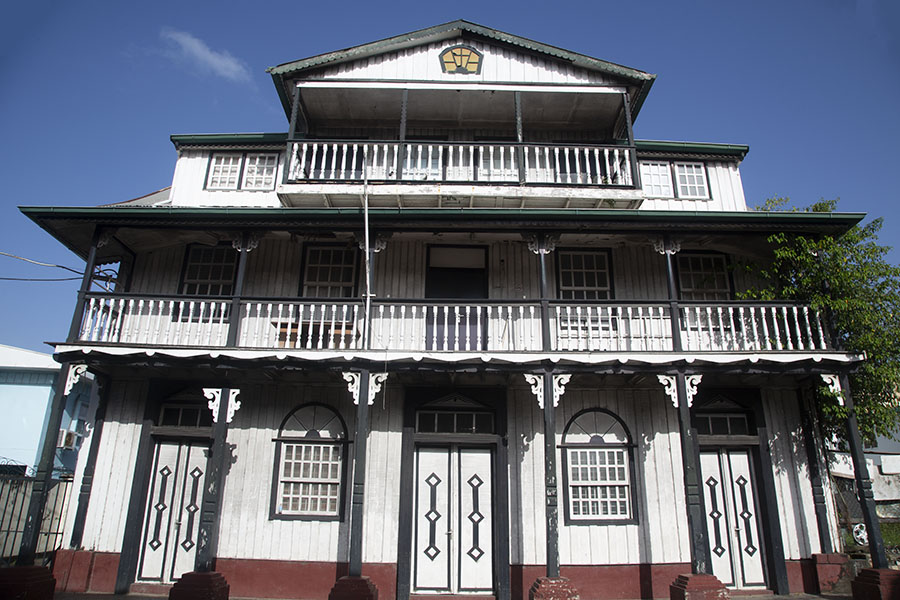
Embracing the Cultural Significance
Paramaribo’s architecture is not only a reflection of its historical past but also of its multicultural heritage. The city’s diverse population, consisting of people of African, Indian, Javanese, Chinese, and Indigenous descent, has contributed to its rich cultural tapestry. Paramaribo’s architecture serves as a visual representation of this cultural diversity, with buildings reflecting the influences of different ethnic groups. It is a testament to the city’s inclusive nature and the harmonious coexistence of its residents.
The significance of preserving Paramaribo’s architectural legacy
Preserving Paramaribo’s architectural legacy is of utmost importance in ensuring the city’s cultural and historical continuity. The unique blend of architectural styles found in Paramaribo is a testament to its rich heritage and serves as a source of pride for locals. By preserving and maintaining the city’s historic buildings, we can ensure that future generations can appreciate and learn from the architectural splendor of Paramaribo. Furthermore, the preservation of historical buildings contributes to the city’s tourism industry, attracting visitors from around the world who come to admire its unique architectural treasures.
Cultural events and festivals celebrating Paramaribo’s architecture
Paramaribo’s architecture is celebrated through various cultural events and festivals throughout the year. One such event is the Heritage Month, held annually in July, which showcases the city’s architectural heritage through guided tours, exhibitions, and lectures. During this month, locals and tourists alike have the opportunity to delve deeper into Paramaribo’s architectural history and gain a better understanding of its cultural significance. The Suriname Heritage Festival, held in September, also provides a platform for celebrating Paramaribo’s architectural beauty, as well as its diverse cultural traditions.
Architectural Conservation and Preservation Efforts
Preserving Paramaribo’s unique architecture requires the collaborative efforts of various organizations and communities. One such organization is the Foundation for the Preservation of Historic Buildings in Paramaribo (SBMF), which plays a vital role in conserving and restoring the city’s historical structures. Through their efforts, many buildings have been restored to their former glory, ensuring their longevity for future generations to enjoy. However, the preservation of Paramaribo’s architecture also comes with its challenges, such as limited funding and the need for ongoing maintenance. Nonetheless, the dedication and passion of these organizations continue to contribute towards the preservation of Paramaribo’s architectural legacy.
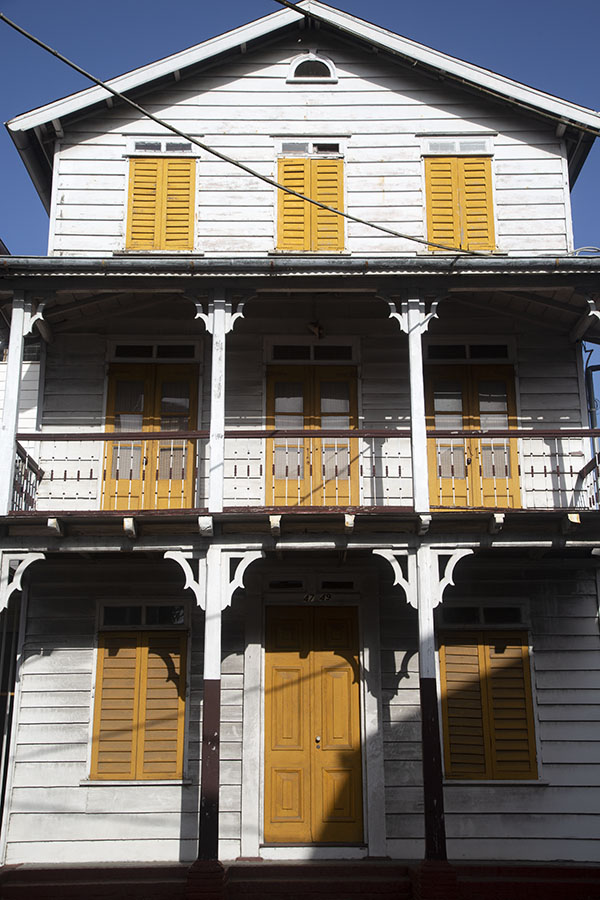
Successful examples of architectural restoration in Paramaribo
Paramaribo has witnessed several successful examples of architectural restoration that have breathed new life into the city’s historic buildings. One such notable project is the restoration of Fort Zeelandia, which now serves as a museum and cultural center. The restoration preserved the fort’s original architecture and transformed it into a dynamic space that showcases the city’s history and culture. Another successful example is the restoration of the central market, which has transformed it into a vibrant and bustling hub for local vendors and artisans. These restoration projects have not only preserved the architectural heritage of Paramaribo but have also contributed to the city’s urban revitalization efforts.
Paramaribo’s Architectural Influence and Inspiration
Paramaribo’s architecture has had a significant impact on the broader Caribbean architectural landscape. The city’s unique blend of styles and its colonial heritage have influenced the architectural designs of neighboring countries. The use of vibrant colors, intricate details, and wooden elements can be seen in Caribbean architecture, reflecting the influence of Paramaribo’s architectural legacy. Furthermore, Paramaribo’s architecture has also inspired contemporary designs, both within Suriname and internationally. Architects and designers often draw inspiration from the city’s vibrant architectural landscape, incorporating elements of Paramaribo’s design into their own creations.
Sustainable Architecture in Paramaribo
Paramaribo is not only known for its historical and cultural heritage but also for its commitment to sustainable architecture. Several initiatives promote eco-friendly practices and incorporate sustainable design principles in the city’s architectural projects. One such initiative is the use of renewable energy sources, such as solar power, in public buildings and residential complexes. Another initiative is the promotion of green spaces and urban gardening, which enhances the city’s livability and reduces its carbon footprint. These sustainable practices not only contribute to the preservation of Paramaribo’s natural environment but also serve as an inspiration for other cities striving to create a sustainable future.
The Role of Government in Preserving Paramaribo’s Architecture
The government plays a crucial role in preserving Paramaribo’s architectural heritage through policies and regulations. The government has implemented laws and regulations to protect historical buildings from demolition or inappropriate alterations. It has also established partnerships with architectural organizations and international bodies to promote architectural diversity and preservation efforts. Additionally, the government actively supports urban development projects that prioritize the preservation and adaptive reuse of historical buildings. Through these initiatives, the government aims to strike a balance between preserving Paramaribo’s architectural legacy and promoting the city’s sustainable growth.
Notable Architectural Landmarks in Paramaribo
Paramaribo is home to several notable architectural landmarks that showcase the city’s rich history and cultural heritage. One such landmark is the Saint Peter and Paul Cathedral, the largest wooden church in the Western Hemisphere. Its impressive structure, intricate detailing, and ornate interior make it a must-visit destination for architecture enthusiasts. The Presidential Palace, another architectural gem, offers a glimpse into the city’s colonial past with its grand façade and opulent interiors. Fort Zeelandia, with its imposing stone walls and historical significance, is also worth exploring. Finally, the Central Market, with its vibrant colors and lively atmosphere, provides a true taste of Paramaribo’s architectural and cultural beauty.
Architectural Diversity in Paramaribo’s Neighborhoods
Paramaribo’s neighborhoods are a testament to the city’s architectural diversity. Each neighborhood showcases a distinct architectural style, reflecting the historical and cultural influences of its inhabitants. In the historic center, the Waterkant neighborhood is renowned for its beautiful colonial buildings that overlook the Suriname River. The Flora neighborhood, on the other hand, boasts modern architectural designs and is known for its spacious residential complexes. The Commewijne district, located on the outskirts of Paramaribo, showcases traditional Surinamese architecture, with its wooden buildings and vibrant colors. Exploring Paramaribo’s neighborhoods allows you to experience the rich tapestry of architectural styles that the city has to offer.
Influence of Paramaribo’s Architecture on Local Art and Culture
Paramaribo’s architecture has had a profound impact on the local art and culture of Suriname. Artists often draw inspiration from the city’s architectural beauty, with many incorporating elements of Paramaribo’s buildings in their artwork. Traditional Surinamese art forms, such as wooden carvings and ceramics, often feature motifs and designs reminiscent of Paramaribo’s architecture. The architecture-themed cultural activities, such as exhibitions and workshops, provide a platform for artists and artisans to showcase their skills and honor the city’s architectural heritage. Through art and culture, Paramaribo’s architecture continues to shape and inspire the creative spirit of Suriname.
The Importance of Public Spaces in Paramaribo’s Architecture
Paramaribo’s architecture is not confined to buildings alone; it also extends to its well-designed public spaces. These spaces play an integral role in fostering community engagement and enhancing the quality of life for residents. The central market square, for example, serves not only as a bustling marketplace but also as a gathering place for cultural events and festivals. The Palm Garden, located in the heart of the city, offers a peaceful retreat for locals and tourists alike, providing a space for relaxation and contemplation. These public spaces also serve as platforms for architectural expression, showcasing the city’s commitment to design and urban planning.
Paramaribo: A Modern City with a Historic Heart
Paramaribo is a unique city that seamlessly blends modernity with its historic heart. While the city has embraced contemporary architectural projects, it has successfully preserved its architectural heritage. The juxtaposition of modern buildings and historical structures creates a dynamic and vibrant urban landscape. The city’s commitment to urban development and city planning ensures that Paramaribo continues to evolve while maintaining its cultural and architectural identity. Paramaribo’s modern architectural projects, such as the Surinamese Parliament Building, are a testament to the city’s progressive mindset and its willingness to embrace new design concepts.
Conclusion
Paramaribo’s remarkable architecture is a testament to the city’s rich history, cultural diversity, and commitment to preservation. Its unique blend of Dutch colonial, Caribbean, and indigenous influences sets it apart from other cities in the Caribbean region. Through the lens of photography, we have embarked on a visual journey that captures the essence of Paramaribo’s architectural splendor. Whether it is the ornate facades, vibrant colors, or the intricate details, Paramaribo’s architecture offers endless opportunities for exploration and appreciation. As we conclude this photo journal, let us reflect on the enduring legacy of Paramaribo’s architecture and the inspiration it offers for future generations.
